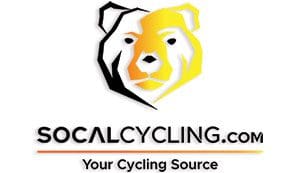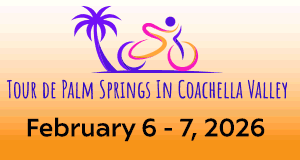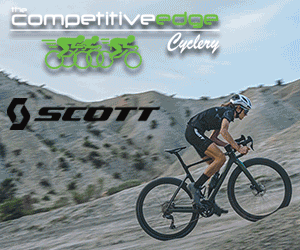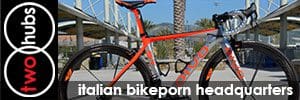Cyclists Helping One of Their Own, the Survival Story of Damian Lopez Alphonso
1/1/11 - At age 13, while trying to retrieve a kite caught on an electrical wire in his native Cuba, Damian Lopez Alphonso was electrocuted with 13,000 volts of electricity - the voltage equivalence of what it takes to move a New York City subway car.
When Damian reached up to the wire with a metal pole, an electrical current quickly traveled down the rod, severely scorching Damian's hands, forearms, chest, and neck. The pole then repeatedly struck him in the head, disfiguring his face.
He spent 52 days on life support following the accident and has had dozens of surgeries - some life-saving - since his teens. Doctors are still baffled by the fact that he's alive.
Damian, now 34, hasn't allowed these seeming setbacks to slow him down - literally.
Although he lost both of his hands and uses no adaptive devices, Damian is an accomplished cyclist, who finished first at the Coppa 8 de Marzo Time Trial, second at the Tour of Havana de Este, and third at the Criterium de Havana against some of the best athletes in his region.

At 13, Damian Lopez Alphonso was electrocuted with 13,000 volts of electricity,
which resulted in the loss of both hands. Today at 34, is an accomplished cyclist.
Photo courtesy of Marco Quezada / Fuji
He learned to ride his bike by carefully resting the remains of his arms on upturned handlebars.
Tracy Lea, a fellow cyclist and a Team Fuji ambassador, first witnessed this balancing act at the 2002 Pan American Championships in Cuba.
She remembers thinking, "Wow, this guy's adaptive skills are amazing."
As one of the co-founders of World T.E.A.M. Sports, a non-profit that organizes athletic challenges for people with disabilities, Lea had spent much of her career working with the disabled - and she had never met someone so capable.
Lea made several trips back to Cuba, where she rode alongside Damian, mesmerized by how he could compete without prosthetics and not in the Paralympics realm but against some of the best able-bodied cyclists in the world.
One day at the track, Lea was attempting to change her chain rings when Damian walked over and said (through an interpreter), "C'mon, Tracy. You can do better than that."
He squeezed the Allen key between his arms and replaced her chain rings.
Lea decided then and there that she wanted to help Damian in any way she could.
This past September, she obtained a license to go down to Cuba. She met with Damian and his parents and suggested that Damian travel with her to the U.S. to meet with doctors to discuss the possibility of prosthetics and facial reconstruction.
"Damian never asked for anything," Lea explained. "He has a sense of dignity about him. He's a very independent man."
It was she who wanted to help him.
The family pleaded with Lea to take care of Damian, their only son who had lived with them his entire life. Tracey vowed, "I will care for him like I would my own son."
Knowing that neither she nor Damian's family could front the cost of reconstructive surgery, prosthetics, tests, and travel, Lea began reaching out to the cycling community.
A number of private individuals, Lea's fellow cyclists, offered to pay for Damian's travel expenses, and the National Foundation for Facial Reconstructions offered to pay for any tests Damian would have to undergo.
Lea secured a visa for Damian through the American Interest Section of Cuba, and Damian arrived in the U.S. on December 6th.
A gift from an old friend was waiting for Damian upon his arrival.
Ivan Dominguez, born in Havana, became acquainted with Damian when the two raced together in Cuba. The two-time Pan American Games gold medalist defected to the U.S. in 1998 and is now considered one of the best sprinters in the country.
Formerly a Fuji-sponsored athlete and still a good friend, Dominguez called Fuji as soon as he heard about Damian coming to the U.S.
Dominguez had hoped to offer Damian one of his own bikes but after realizing that Damian needed a smaller size, Dominguez asked Fuji if they would be willing to donate a brand new bike.
"It doesn't have to be a top-of-the-line bike, but something that he can train and race and feel good about," Dominguez wrote to Fuji Marketing Director Karen Bliss in September. "It will mean a lot to me but more to the boy," he said.
Bliss's response was simple: "Of course."
So when Damian arrived in New York, a brand new Fuji Roubaix ACR was waiting for him, and Lea took him to Echelon Cycles, a Fuji dealer on 8th Avenue in Manhattan, for a full fitting.
With his new bike in tow as well as some new cycling gear provided by Louis Garneau and Hincapie Clothing per Dominguez, Damian set off for the NYU Langone Center.
Positioned in front of a classroom full of doctors, Damian wowed all in attendance with what he is already capable of doing: signing his name, sketching, screwing on a Coke bottle cap, putting on Velcro shoes, and maneuvering a remote-controlled helicopter.
And by the end of the week, the doctors decided they would be able to help Damian add to that list.
"He's going to get racing arms!'' Lea reported proudly. "And facial reconstruction!"
The surgery is planned for late January 2011, and he will be fitted for prosthetics following the surgery.
The National Foundation for Facial Reconstruction has offered to cover the cost of the surgery, and the Achilles Foundation, a non-profit organization that enables disabled and able-bodied athletes to train together, has offered to pay for Damian's prosthetics.
"Everyone has stepped up, helping and networking," said Lea. "He's achieved incredible acceptance in the cycling community.''
"When people have a chance to meet him, it's a game changer. People who see him ride his bike, it keeps our lives in perspective," she added.
Damian doesn't speak a word of English and Lea's Spanish is limited. Thus, the two's only means of communication is body language and facial expressions. But due to Damian's facial disfiguration, his expressions are difficult to discern.
So how does the quiet, unassuming 34-year-old from Cuba express his gratitude to Lea?
"I feel like I don't need that from him,'' Lea said. "He knows what I'm doing. And this is not about me"
"There's something core driving me to help him," she explained. "I'm making sense of what I have, so I can help someone else."
With aspirations of qualifying for the 2012 Cycling Paralympics and racing in the New York City Marathon (the Achilles Foundation has already extended a personal invitation), Damian's dreams are big.
It's because of Lea and the cycling community's generous contributions that Damian is where he is today. But it's going to take a lot more to see Damian's dreams realized. If you'd like to help Damian, please contact Tracy Lea at tlea@tracylea.net or visit the Achilles Foundation's donation page at www.achillesinternational.org/support/individual or the National Foundation for Facial Reconstruction's homepage at www.nffr.org.
Looking Ahead:
When Damian returns to the U.S. in January, Fuji will be there every step of the way to bring you this remarkable story of survival and human kindness through words, photos, and video. Stay tuned.








